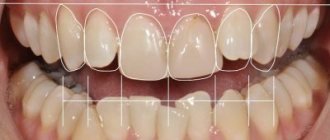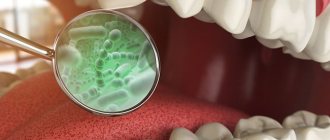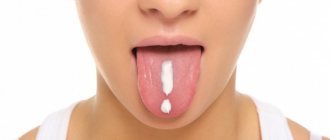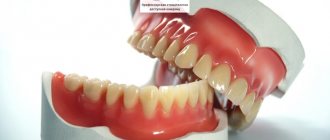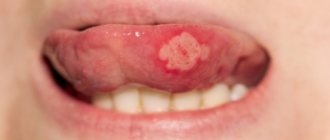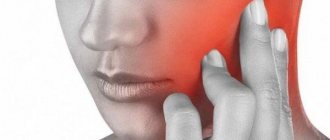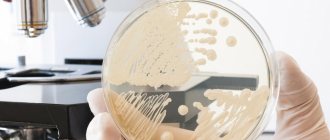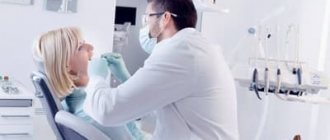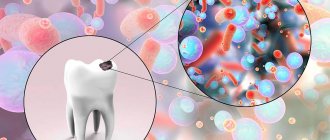Fighting caries
The first and one of the most important steps is identifying and treating cavities. Ignoring the various stages of caries leads to its further spread, pulpitis and periodontitis. These conditions significantly impair the quality of life, leading to pain and sensitivity, tooth decay and bad breath. Restoration of the oral cavity includes cleaning carious cavities and filling them in order to stop the pathological process and return the tooth to its functional and aesthetic state.
Replacing missing teeth
Restorative dentistry is based on the principle of maximum preservation and protection of natural teeth. Replacing missing teeth with a dental implant, bridge, full denture, or partial denture also promotes dental health. Replacing lost teeth in your mouth can help prevent tooth decay in your remaining teeth because oddly shaped spaces are ideal places for plaque-causing bacteria to accumulate. Missing teeth also puts additional stress on the remaining natural teeth by reducing the chewing surface.
When choosing a restorative dentistry strategy, you need to consider both physical and financial factors—your health and your budget. Most restorative dentists will try to preserve your natural teeth as much as possible before resorting to full or partial dentures, so that you do not have to regularly remove and clean appliances. But sometimes full or partial dentures are the best option if you have many missing teeth and are not a candidate for dental implants due to health problems.
How to determine that a denture has a bad effect on the microflora of the oral cavity?
It has been proven that the prosthesis and prosthetic material negatively affect the oral mucosa, as well as numerous elements of its homeostasis.
Dentists consider the subjective complaints of patients to be the main criterion for the influence of a design. Often, denture owners complain of symptoms such as:
- dry mouth;
- continuous burning;
- changes in the usual tastes of foods.
When choosing dentures, the dentist is based on the characteristics of the defects in the dentition and the condition of the remaining teeth. But, unfortunately, doctors very rarely take into account the condition of the mucous membrane itself and its microflora, although they know that the degree of sedimentation of microorganisms on prosthetic materials can vary significantly.
The work of the salivary glands also changes under the influence of dentures:
- the intensity of salivation changes (its sharp decrease is observed);
- the concentration in saliva of total protein, sodium, potassium, as well as biogenic amines decreases;
- lipid peroxidation is activated;
- The protective capabilities of saliva are significantly reduced.
Removable dentures often cause significant dysbiosis in the oral cavity, creating favorable conditions for many pathogenic microorganisms. For example, several years ago scientists discovered such microorganisms under plate structures as:
- enterococcus;
- non-hemolytic streptococcus;
- diplococcus;
- pathogenic staphylococcus;
- gram-positive rods;
- mushrooms of the genus Candida;
- lactobacilli.
As we have already said, most often pathological reproduction of Candida fungi occurs due to a decrease in the body’s immune defense and further colonization of the entire mucous membrane by fungi. While salivation decreases, the number of fungi increases, the microbial balance of the oral cavity changes, which often leads to the development of various types of inflammation of the tissues of the prosthetic bed.
Microorganisms release waste products, and lipid peroxidation processes are activated. Toxic elements increase inflammation and pain reactions and can ultimately cause tissue atrophy.
Treatment of gum diseases
Pain, swelling and bleeding gums often indicate the development of gingivitis. The disease can occur due to external and internal causes. External causes include mechanical irritants (for example, hard brushing of teeth with an unsuitable brush, etc.). Internal causes include other dental diseases, systemic diseases of the body, weakened immune system, etc. Often, gum pathologies occur against the background of improper and irregular oral hygiene. Treatment of gum disease is complex, including treatment of inflammatory foci in the oral cavity and further proper care for it.
What is oral microflora?
Surprisingly, according to scientists, there are from 43 million to 5.5 billion cells per 1 milliliter in saliva. The concentration of microbes in the gingival groove and dental plaque is 100 times higher, reaching 200 billion per 1 gram of deposits.
During birth, the baby's skin receives the most important microflora for his health from the birth canal. But, despite the fact that the baby receives micrococci, lactic acid bacteria, a-, b- and anaerobic streptococci, fungi, enterobacteria and even simple viruses on the skin, his oral cavity remains sterile. The rapid increase in microbes in the oral cavity begins only 8 hours after birth.
After teething, a change in flora also occurs. Various anaerobes can grow in the folds of the oral mucosa. Each person has his own unique microflora on his tongue, saliva and teeth. Microbes accumulate on the smooth surface of teeth, as well as in various fissures and plaques.
What happens when you lose teeth?
With tooth loss, the natural flora changes. The number of lactobacilli, spirochetes and some types of streptococci decreases. When wearing dentures, even greater changes occur. Like any therapeutic agent, these structures, in addition to the therapeutic effect, provoke unwanted and inevitable side effects.
Dentists conventionally distinguish three levels of interaction between the prosthesis and the body:
- Local, tissue, determined directly by the contact of the structure with the tissues of the prosthetic bed.
- Systemic, affecting all components of the masticatory-speech apparatus, as well as parts of the gastrointestinal tract. Some scientists also note the effect of prostheses on the body's immune system.
- Organismal, in which prostheses directly or indirectly change the psychology and autonomic functions of the patient.
Very often, when wearing dentures, not only the microflora of the oral cavity changes. Various forms of inflammation may also appear:
- local;
- diffuse;
- granulating.
Choosing the right dental restoration
Dental restorations are the various ways in which a dentist can replace missing teeth or restore missing parts of a tooth structure. Tooth structure may be missing due to tooth decay, tooth loss, etc. Traditionally, the following restoration methods are distinguished:
- Fillings are the most common type of dental restoration. There are many options for filling materials. The dentist selects the most suitable one.
- crowns are a tooth-shaped “cap” that is placed over a tooth to restore its shape and size, strength, appearance, and to hold a bridge in place or cover a dental implant.
- Bridges are artificial teeth that are designed to “bridge” the gap formed by one or more missing teeth. Sometimes bridges are fixed on both sides with crowns.
- Implants replace tooth roots. Implants are a small metal rod that is inserted into the jawbone of a missing tooth.
- Dentures are a removable replacement for missing teeth and surrounding tissue. Complete dentures replace all teeth; partial dentures are installed while retaining some of your teeth, which serve as anchors for the denture.
Professional dental care
For successful restoration of the oral cavity, the competence of specialists plays a huge role. Improper treatment of dental and oral diseases can aggravate the condition and lead to complications, the treatment of which is more expensive and more difficult. Therefore, it is extremely important to contact experienced dentists who use modern treatment techniques. If possible, do not skimp on your health and trust the professionals!
Today, thanks to advances in dentistry and a variety of dental and oral care and treatment options, you have every chance of restoring worn, damaged or missing teeth and maintaining a healthy and beautiful smile.
What else affects inflammation when wearing dentures?
Firstly, the state of the oral microflora is influenced by the material from which the prosthesis is made. Maximum adhesion of microorganisms is observed when wearing plastic prostheses. When such a structure is in the mouth for a week, 20 new species of bacteria appear in the microflora, many of which are pathogenic.
Secondly, the influence of the prosthesis on the composition of the microflora of the oral cavity is largely determined by the quality of its manufacture and installation.
How to reduce the negative impact of a prosthesis on microflora?
To reduce the negative impact of dentures on the microflora of the oral cavity, it is important for the patient to be as attentive as possible to the daily care of new teeth. For competent and effective daily hygiene you will need:
- preventive toothbrush with a multi-level brush field;
- therapeutic and prophylactic toothpaste of medium or low abrasiveness with mild anti-inflammatory and astringent properties;
- therapeutic and prophylactic rinse with extracts of herbs and plants, anti-caries, antimicrobial, anti-inflammatory, astringent and deodorizing properties;
- flosses for cleaning interdental spaces or any spaces covered with artificial crowns;
- irrigators for massaging gums in “shower” mode and cleaning the rinsing gap.
If chafing occurs while wearing dentures, try using two unique products - ASEPTA FRESH mouth rinse and ASEPTA PARODONTAL gum gel with propolis.
Gel for gums with propolis "ASEPTA®" is made based on the waste product of bees.
- Natural propolis (10%) in the product provides action in 4 directions: antimicrobial, anti-inflammatory, healing, and reduces pain.
- The gel base allows you to apply the product directly to the inflamed area for a targeted effect.
A product for daily oral hygiene, ASEPTA FRESH rinse, has a unique combination of xylitol and potassium citrate, which reduces tooth sensitivity and protects tooth enamel from the negative effects of acids and bacteria. The mouthwash provides comprehensive oral care due to a carefully selected composition of plant extracts and microelements.
The effectiveness and safety of ASEPTA products has been confirmed by numerous clinical studies conducted at the Central Research Institute of Dentistry and Maxillofacial Surgery.
What adorns a person better than any furs and diamonds? Of course, a beautiful healthy smile. But how can you maintain the natural whiteness of your teeth and the health of your gums if every day they are subjected to “tests” in the form of coffee, unhealthy diet, inattentive care and poor ecology? Of course, seek professional oral care. Today we will talk about what this concept hides and what this type of care includes.
